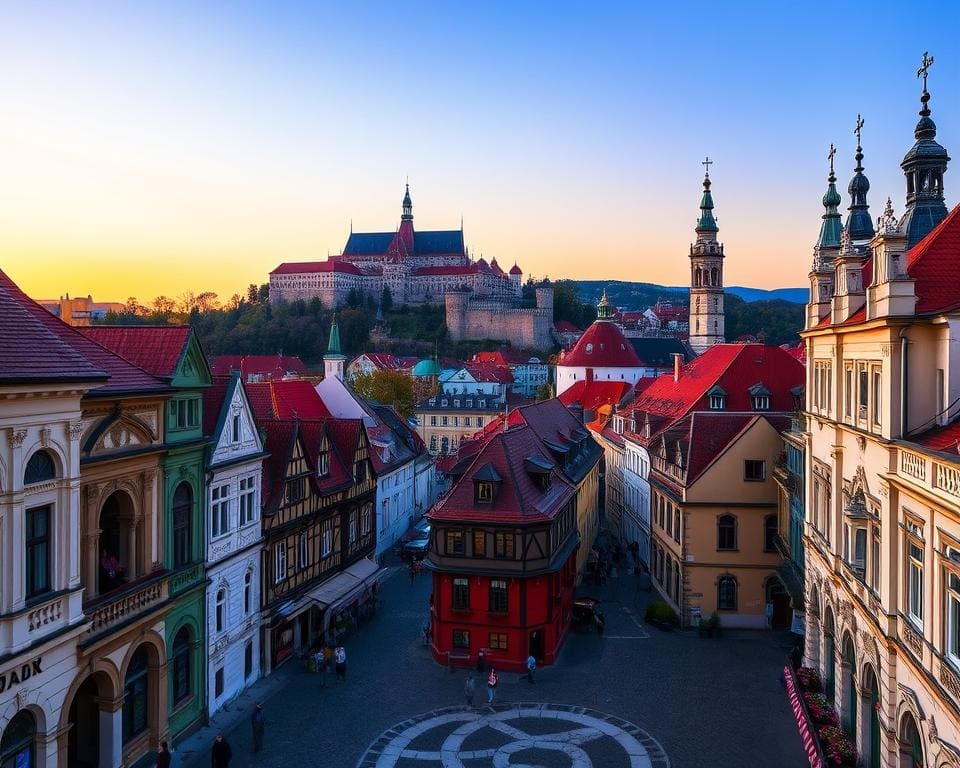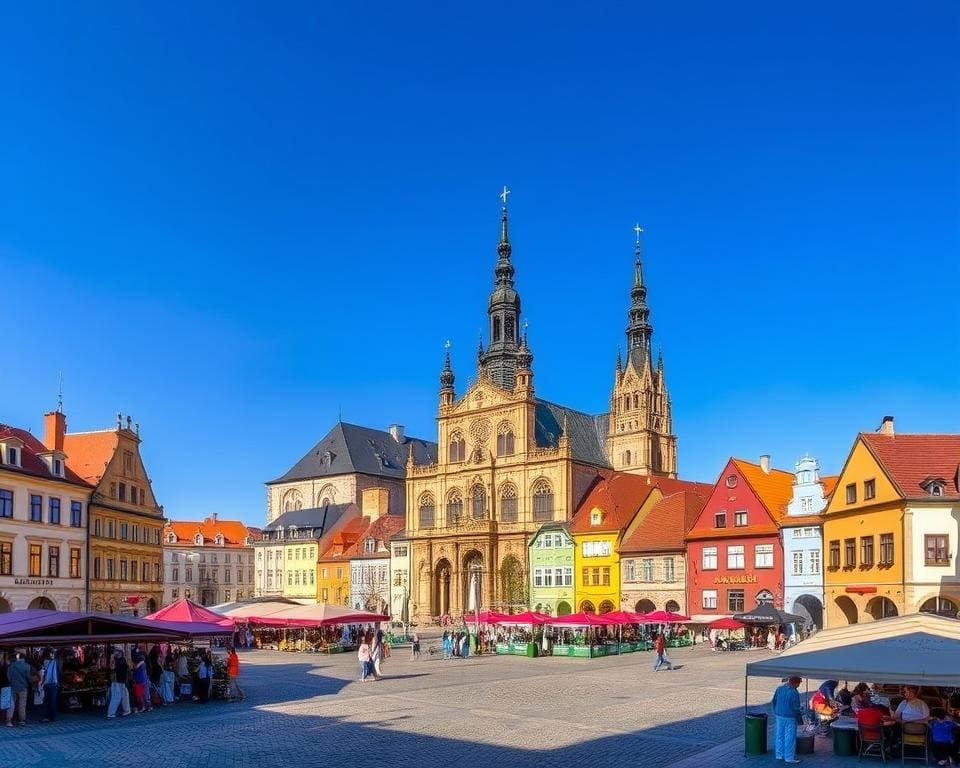Kraków, Poland’s cultural gem, beckons with its timeless charm and rich history. Known for its medieval architecture, the city’s landscape reveals a harmonious blend of Gothic, Renaissance, and Baroque influences that tell tales of an illustrious past. Established in the 7th century and serving as royal capital until the 16th century, Kraków is a canvas painted with significant events that have shaped Polish identity. From the majestic Wawel Castle, a UNESCO World Heritage site, to the breathtaking St. Mary’s Basilica, where Veit Stoss’s renowned altarpiece graces visitors, every corner of Kraków pulsates with history. Join us as we embark on an inspiring journey through this enchanting city, diving deep into its historical significance and local traditions, while discovering the medieval heart of Poland.
Exploring Kraków’s Rich History and Culture
The historic city of Kraków is a treasure trove of historical influence and cultural richness. As we delve into its past, we unravel layers that have shaped Kraków’s development and identity through the centuries. This city stands as a testament to the vibrancy of local traditions that continue to echo the historical context of traditions, providing a glimpse into the heart of Polish culture.
Historical Significance of the Historic City of Kraków
Kraków’s rich history dates back over a millennium, establishing it as a significant centre for trade and education in Poland. This city played a pivotal role in numerous historical events, particularly highlighted by the establishment of Jagiellonian University in 1364. This educational institution not only fostered knowledge during the medieval period but continues to be a pillar of academic excellence today, further enhancing Kraków’s cultural identity.
Impact of the Medieval Period on Kraków’s Development
During the medieval period, Kraków transformed into one of the largest cities in the region. This era was marked by impressive architectural achievements and significant demographic growth. The investments in public buildings and fortifications demonstrated the importance of Kraków as a royal city. The remnants of formidable city walls and the Barbican tell stories of prosperous trade and social gatherings, marking the city as an influential trading hub in Europe. The legacy of this period is still evident today as Kraków embraces vibrant markets and festivals, firmly rooting itself in its historical legacy.
Local Traditions and Their Historical Context
Kraków’s local traditions weave a rich tapestry of cultural expressions deeply connected to its medieval past. Events such as the Wianki Festival celebrate Midsummer, showcasing folk costumes, music, and dances influenced by various historical encounters. Weekly markets continue to thrive, offering traditional crafts and culinary delights that reflect centuries of local heritage. The celebration of Advent, among other customs, serves as a reminder of Kraków’s rich traditions while forging connections between generations, pivotal in developing Kraków’s cultural identity.

Kraków: Discovering the Medieval Heart of Poland
Embarking on a walk through Kraków offers an immersive experience into the medieval heart of Poland. The city’s Old Town captivates visitors with its rich history and stunning architectural marvels. Every corner unveils a story, inviting all to explore Kraków’s old town where cobblestone streets and historic buildings intertwine seamlessly.
A Walk Through the Old Town
As you navigate the enchanting streets of Kraków’s historic centre, the sense of stepping back in time is palpable. The vibrant Main Market Square, one of the largest medieval town squares in Europe, serves as the perfect starting point. Surrounded by captivating architecture like the Cloth Hall and the majestic Town Hall Tower, this bustling area highlights the city’s medieval heritage.
Must-See Sights in Kraków’s Historic Centre
Kraków’s historic centre boasts a plethora of must-see sights that reflect its captivating past. Among these top attractions in Kraków are the grand Wawel Castle, once the residence of Polish monarchs, and the impactful Oskar Schindler’s Factory, which narrates a poignant chapter of World War II. Visitors must not miss St. Florian’s Gate, an iconic remnant of the medieval city walls, as well as the beautifully adorned interiors of the Franciscan Church. Each site enhances one’s understanding of Kraków’s development throughout the centuries.
Hidden Gems of Medieval Architecture
Beyond the popular path lies a treasure trove of hidden gems showcasing Kraków’s medieval architecture. Lesser-known yet striking sites like St. Andrew’s Church and the picturesque Church of St. Peter and St. Paul beckon those willing to delve deeper into the city’s history. The Kazimierz district, with its stunningly preserved synagogues and charming courtyards, once home to Kraków’s Jewish community, offers a unique perspective on the city’s medieval legacy. These architectural wonders provide an enriching experience for those exploring Kraków’s architecture.
Top Attractions in Kraków for Every Visitor
Kraków beckons travellers with its myriad of top attractions, promising unforgettable experiences for every type of visitor. The renowned Wawel Castle stands as a symbol of Poland’s royal history, offering breathtaking views over the Vistula River. Close by, the awe-inspiring St. Mary’s Basilica captivates with its intricate Altarpiece crafted by Veit Stoss, inviting all who enter to delve into the stories of the past.
As you embark on discovering Kraków’s beauty, don’t miss the opportunity to stroll through the charming streets of the Jewish Quarter, Kazimierz, filled with a rich tapestry of tradition and modernity. The district is not only home to several synagogues but also to vibrant cafés and galleries where local artists showcase their talents. It’s an area that truly encapsulates the spirit of Kraków, seamlessly intertwining history and culture.
A comprehensive travel guide to Kraków would be remiss to exclude the Botanic Garden and the National Museum. Both offer serene escapes amidst the city’s energetic pulse. The museum’s impressive collection of Polish art invites reflection and appreciation, while the lush landscapes of the Botanic Garden provide a perfect haven for those seeking tranquillity. Each attraction contributes to the diverse allure of Kraków, ensuring that all visitors leave with a deeper understanding of this vibrant city’s heritage.









